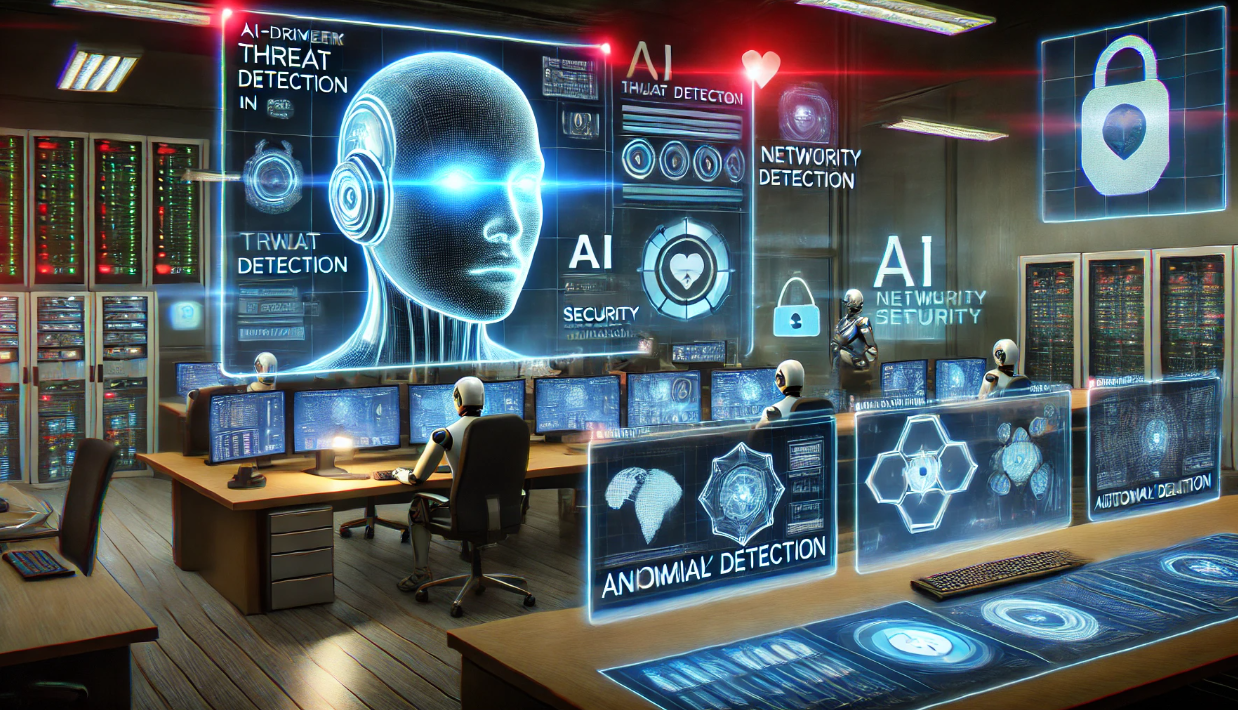The Future of Cybersecurity: New Threats and Solutions in 2025
As technology advances, cyber threats are evolving at an unprecedented pace. AI-powered cyberattacks, quantum computing risks, and sophisticated ransomware are forcing businesses to rethink their security strategies.
In 2025, cybersecurity will be defined by adaptive AI defense systems, zero-trust security models, and advanced threat intelligence.
✅ In this guide, we’ll cover:
- Emerging Cyber Threats in 2025
- AI-Powered Cybersecurity Solutions
- How Businesses Can Stay Protected
Let’s dive into the future of cybersecurity and how to prepare for new challenges!
Emerging Cyber Threats in 2025
1️⃣ AI-Powered Cyberattacks
Cybercriminals are using AI-driven malware and phishing attacks that can evade traditional security defenses.
✔️ AI can generate realistic phishing emails that bypass spam filters.
✔️ Automated hacking bots can scan for vulnerabilities in real time.
Example: Attackers are using deepfake technology to impersonate executives and trick employees into transferring funds.
2️⃣ Quantum Computing Threats ⚛️
✔️ Quantum computers will soon have the power to break traditional encryption algorithms.
✔️ Organizations must shift to quantum-resistant encryption to prevent data breaches.
Example: Cybercriminals can use Shor’s Algorithm to break RSA and ECC encryption, rendering current security protocols obsolete.
3️⃣ Ransomware-as-a-Service (RaaS)
✔️ Cybercriminals are selling ransomware kits on the dark web, making it easier for anyone to launch attacks.
✔️ Double extortion ransomware locks data AND threatens to expose sensitive information.
Example: A new strain of AI-powered ransomware can mutate in real-time, making detection difficult.
4️⃣ Supply Chain Attacks
✔️ Attackers compromise software vendors to distribute malicious updates.
✔️ Small businesses and third-party vendors are high-value targets.
Example: The SolarWinds cyberattack allowed hackers to infiltrate government agencies and Fortune 500 companies.
5️⃣ IoT and 5G Security Risks
✔️ Smart devices and 5G networks create new vulnerabilities.
✔️ Attackers can exploit insecure IoT devices to launch DDoS attacks.
Example: Cybercriminals used hacked IoT cameras to launch the largest DDoS attack in history (Mirai botnet).
AI-Powered Cybersecurity Solutions
✅ 1. AI-Driven Threat Detection & Response
✔️ AI-powered XDR (Extended Detection and Response) continuously analyzes network traffic for anomalies.
✔️ Machine learning detects new attack patterns in real-time.
Example: Microsoft Defender & Darktrace AI use behavioral analytics to stop cyber threats before they happen.
✅ 2. Quantum-Safe Encryption
✔️ Companies are adopting post-quantum cryptography (PQC) to protect sensitive data.
✔️ Quantum Key Distribution (QKD) prevents man-in-the-middle attacks.
Example: Google and IBM are developing quantum-resistant encryption standards.
✅ 3. Zero Trust Security Model (ZTS)
✔️ “Never trust, always verify” – No device or user is automatically trusted.
✔️ Multi-factor authentication (MFA) and role-based access control (RBAC) are mandatory.
Example: Google’s BeyondCorp uses zero trust architecture to protect its internal networks.
✅ 4. Blockchain-Based Cybersecurity
✔️ Decentralized identity management prevents identity theft.
✔️ Immutable transaction records help detect fraud and insider threats.
Example: IBM uses blockchain for tamper-proof cybersecurity logs.
✅ 5. Automated Security Operations (SecOps)
✔️ AI-powered automation reduces response time to cyber incidents.
✔️ Security Orchestration, Automation, and Response (SOAR) tools help prioritize threats.
Example: Splunk and Palo Alto Cortex XSOAR automate incident response.
How Businesses Can Stay Protected
✅ 1. Implement a Strong Zero Trust Security Policy
✔️ Require MFA and biometric authentication.
✔️ Segment network access based on least privilege principles.
Pro Tip: Use Azure AD Conditional Access to enforce zero trust.
✅ 2. Invest in AI-Driven Security Platforms
✔️ Deploy AI-powered endpoint security (EDR/XDR).
✔️ Use behavioral analytics to detect anomalies in real-time.
Example: CrowdStrike Falcon uses AI threat intelligence to detect & block attacks.
✅ 3. Migrate to Quantum-Safe Encryption
✔️ Use post-quantum cryptographic algorithms (NIST-approved).
✔️ Implement Quantum Key Distribution (QKD) for secure communication.
Example: The NSA recommends switching to quantum-resistant encryption by 2024.
✅ 4. Conduct Regular Cybersecurity Audits & Employee Training
✔️ Run phishing simulations and penetration testing.
✔️ Train employees to identify social engineering attacks.
Example: 90% of cyberattacks start with phishing – employee training reduces risk.
✅ 5. Strengthen Cloud & IoT Security
✔️ Encrypt cloud data with zero-trust encryption.
✔️ Use AI-powered IoT security to detect anomalous behavior.
Example: AWS Shield & Google Chronicle use AI for cloud threat detection.
Final Thoughts: Preparing for the Future of Cybersecurity
The cybersecurity landscape in 2025 will be dominated by AI-driven threats and next-gen defense strategies.
✅ Key Takeaways:
✔️ AI-powered cyberattacks & quantum computing risks are the biggest threats.
✔️ AI-driven security platforms and zero-trust security models will become standard.
✔️ Quantum-safe encryption & blockchain will protect sensitive data.
✔️ Businesses must train employees & adopt automated security solutions.
By implementing these cybersecurity strategies, businesses can stay ahead of evolving cyber threats!

